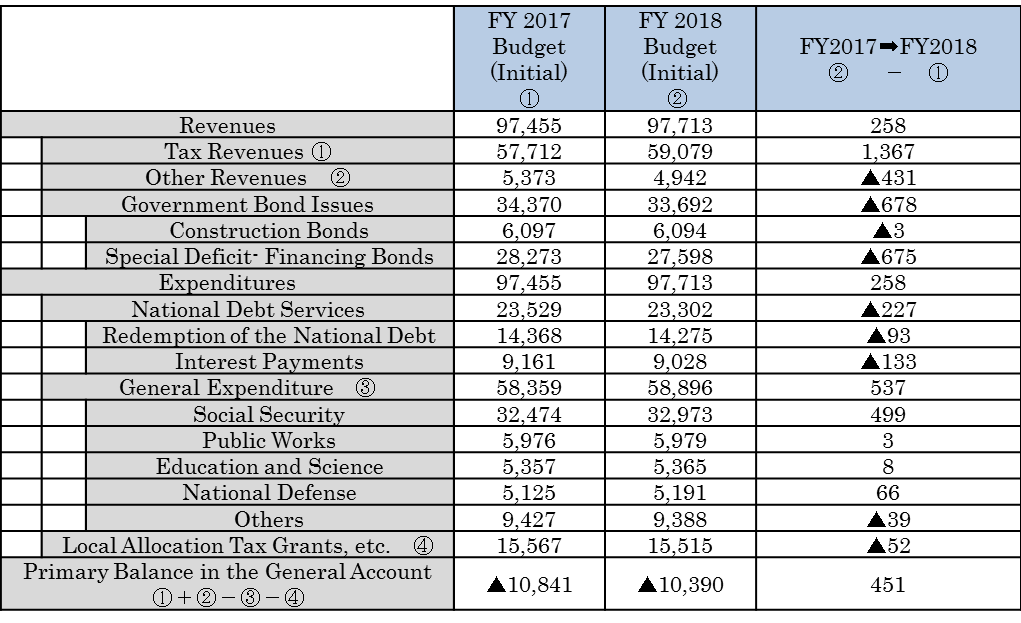Column Finance and the Social Security System 2018.03.22
【Aging, safety net and fiscal crisis in Japan】No.72: FY 2018 Budget Framework
Table 1 summarizes the budget for Fiscal Year 2018 (April 2018-March 2019). The government emphasizes that tax revenues will increase by 1,367 billion yen as a result of economic policy and that the deficit in the primary balance will shrink by 451 billion yen. However, the Bond Dependency Ratio, which is the proportion of issuance of government bonds in general account revenues, remains high at 34.5%. Moreover, the Abe administration is planning to postpone the target period of the basic fiscal balance, which is one of the cornerstones of fiscal reconstruction, from 2025 to 2027. The necessary financial resources for social security, which is the biggest factor of the increase in expenditure, will continue to increase. A drastic reform of social security is unavoidable. However, the government decided to raise fees for medical care, long-term care, and disability welfare service in April 2018.

(Source)Ministry of Finance
